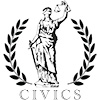| « A Small Token of Support for (or Against) #OccupyWallStreet | Layoffs Planned at the Chicago Public Library » |
Op-Ed Wed Oct 26 2011
Rainwater In Context: Is Chicago's Water Rate Increase Money Down the Drain?
by John Norquist and Caitlin Ghoshal
As many cities face both costly aging infrastructure and looming budget deficits, public administrators are turning to fee increases to finance system fixes. Most recently, Chicago Mayor Rahm Emanuel's proposed 2012 budget outlines an up-to-25% increase in the annual fee for water and sewer services. The Congress for the New Urbanism supports Chicago's water modernization efforts, but the Mayor's proposed fee lacks a direct connection to urbanism and green infrastructure.
A rate increase that only patches sewer pipes will flush taxpayers' money down the drain. If this water rate increase only helps the City rebuild - instead of renew - water infrastructure, the same stormwater problems will plague the City's streets. Innovative and context-sensitive rainwater systems are not only sustainable and environmentally friendly, but also cost-effective. Green water infrastructure, the type(s) as proposed in CNU's Rainwater-in-Context initiative, helps reduce stormwater runoff and its stress on the sewer system. Permeable pavement, alternative street design, and other context-sensitive rainwater systems protect urban watersheds like Chicago's - undoubtedly one of the city's greatest assets.
The current state of disrepair of Chicago's water infrastructure should be viewed not as a liability that can only be remedied through higher rates for fixes, but rather as an opportunity to create longer-lasting, more sustainable systems that securely plant Chicago at the forefront of green design. As the Mayor is wont to say, "You never want a serious crisis to go to waste." Dense urban areas like Chicago have inherent environmental strengths (especially when compared to conventional sprawl patterns), and incorporating urban-minded water infrastructure can only enhance this standing. In committing to both green infrastructure and new urbanism, Mayor Emanuel has the opportunity to realize sustainable practices that reinforce the urban environment and protect the City's and taxpayers' assets for the long term.
Chicago helped pioneer interdisciplinary water and street planning, such as its Green Alley program. Dedicating water rate increases to broadly implementing urbanist green infrastructure keeps Chicago a leader in sustainable water policy. Mayor Emanuel's budget proposal to address inefficient water pricing is only part of a more comprehensive solution to better managing Chicago's watershed. Green - and urbanist - water infrastructure will shower rewards on both local government's coffers and taxpayers' pockets.
John Norquist is the CEO & President of the Congress for the New Urbanism, served as Mayor of Milwaukee from 1988-2004, and is the author of the book The Wealth of Cities
Caitlin Ghoshal is the Program Manager for the Congress for the New Urbanism, and served as a Mayoral Fellow in the Office of Mayor Rahm Emanuel during the Mayor's first 100 days of office.
For more information on CNU's Rainwater-In-Context, please visit http://www.cnu.org/rainwater.











